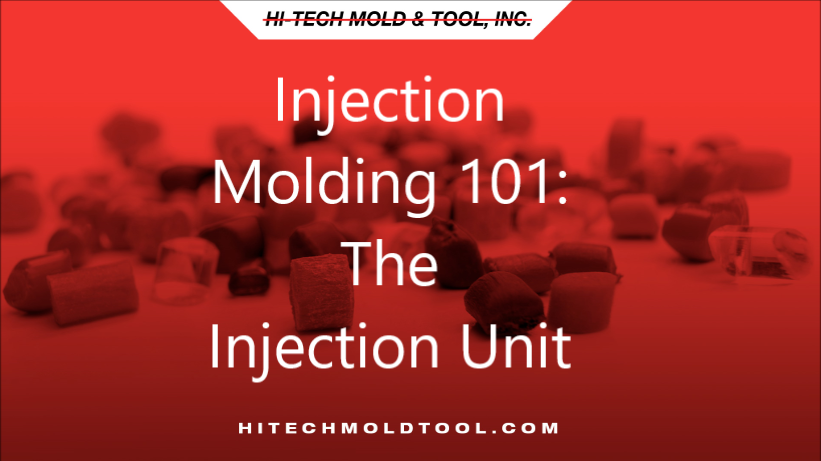This is the first of two videos built around teaching about Injection Molding machines. The first video focuses on the Injection Unit.
Our equipment list contains both the Ounces of Polystyrene that each Injection Molding machines Injection Unit or barrel will hold and the Peak Injection Pressure. The Ounces of Polystyrene is most helpful as if you have the volume of the part you are interested in, you can determine if the barrel or injection unit is large enough to make your part. Material suppliers recommend that the part volume not be lower than 20% of a barrels capacity and not above 80% of a barrels capacity. If the part volume is too low compared to the barrel capacity, then the residence time could mean the material gets degraded. If the part volume is too high, the melt may not get good mixing and the potential for non-melted pellets can be present.
The main pieces of an Injection Unit are the Barrel, Screw, Material Hopper and the method for generating pressure either Hydraulic or Electric. Inside the heated barrel is a reciprocating screw. The screw is used to feed material to the front of the screw past the check ring. There are different screws for different resins, but most often a general purpose screw works.
While the screw is plasticizing or picking up the next shot, it is turning and slowly moving backward. Back pressure is applied to the screw so that the material in front of the screw does not have air pockets. Material flows over the check ring and in front of the screw tip. When the screw starts to move forward to begin the Fill Stage, The locking ring prevents the material from flowing back and keeps it going into the mold.
The nozzle tip and nozzle heater band are what sticks out of the end of the barrel. Keeping this area hot is crucial to not having flow problems or cosmetic issues. If material freezes in the nozzle, this hard material will cause Injection Pressure spikes and you’ll see the solid material in the part.
An Airshot is always done when starting up and shutting down a machine. This is just shooting material out of the end of the barrel into the injection unit well behind the stationary platen. Airshots are always done at low pressure to not cause injury.
The next video will cover the platens, which are the portion of the Injection Molding machine that keep the mold closed while material is being shot into it.

